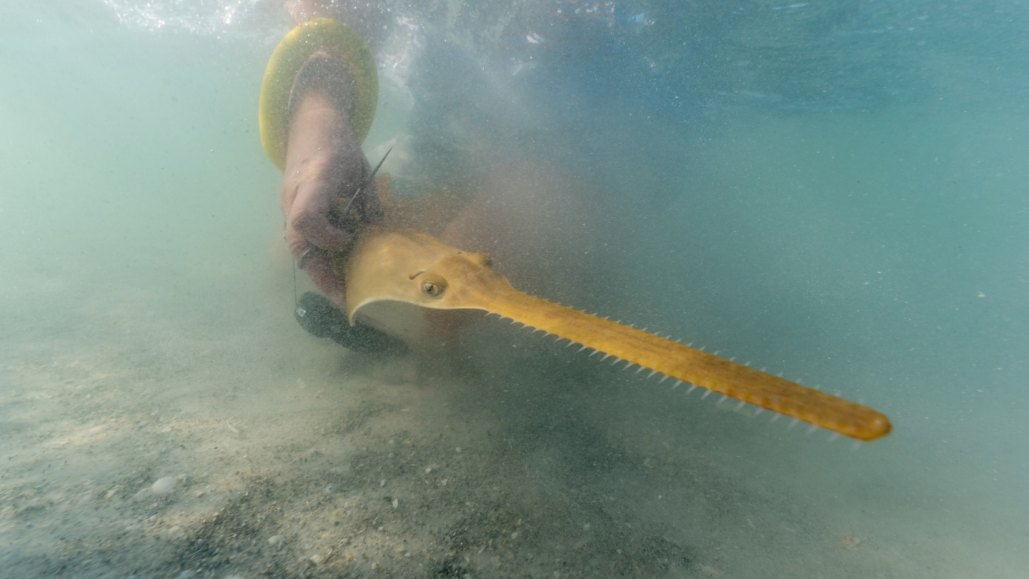A pocket protector prevents sawfish from engaging in 'sword fighting' before birth

The unique elongated snout, populated with sharp teeth, of the smalltooth sawfish is formed while it is still in the womb. It is wrapped in a dedicated cover that stops it from harming its siblings and mother during gestation and birth. Recently, researchers have had their first close analysis of this preinstalled protective apparatus.
"Mother Nature seems to have created a clever way to keep the mother safe from the hardened teeth and avert sibling squabbles in the uterus," says Gregg Poulakis, a fish biologist with the Florida Fish and Wildlife Conservation Commission in Charlotte Harbor.
By observing newborn sawfish and examining tissue samples in the lab, it has been discovered that the protective layer is a robust, multi-levelled "second skin" that sheds around four days post-birth, according to Poulakis and team in their May 28 report in the Fishery Bulletin. This debunks the longstanding belief that the protective layer was a weak, gelatinous coating.
Dean Grubbs, a fish ecologist at Florida State University's Coastal and Marine Laboratory in St. Teresa who is not affiliated with this research, says, "Historically, many descriptors seem to be based on people just observing from photos. It's a significant structure... as you'd anticipate it to be if designed to shield such sharp points."
The smalltooth sawfish species, Pristis pectinata, is primarily located in waters around the western Bahamas and South Florida. Due to the rarity of the ray, Poulakis and team spent 18 years conducting nearly monthly research trips to grab a few samples of the protective sheath tissue.
Poulakis describes the sheath as having a paraffin wax-like texture: solid, but somewhat pliable. He adds, "You can't merely peel it off."
Analyses of the samples including histology, scanning electron microscopy, micro-CT and elemental evaluation indicate the sheath comprises two layers of tissue similar to an epidermis and dermis. The tissues possess proteins resembling those found in keratin, reticulin and collagen. This implies the sheath may be a second skin. However, the researchers stress that further studies are needed to confirm this proposition.
The study offers a deeper understanding of the life history of the smalltooth sawfish, a species critically endangered due to entanglement in fishing nets and habitat degradation. Initially, scientists believed the smalltooth sawfish was showing signs of recovery, says Poulakis. Currently though, their population is again at risk due to an unexplained die-off in the Lower Keys of Florida. With many sawfish perishing, efforts are being made to identify the cause, by Poulakis and other researchers.
Poulakis laments, "It’s disappointing when something like this transpires and forces us to step backwards again. We're collecting many samples that will enrich our knowledge about the species beyond this death event."




